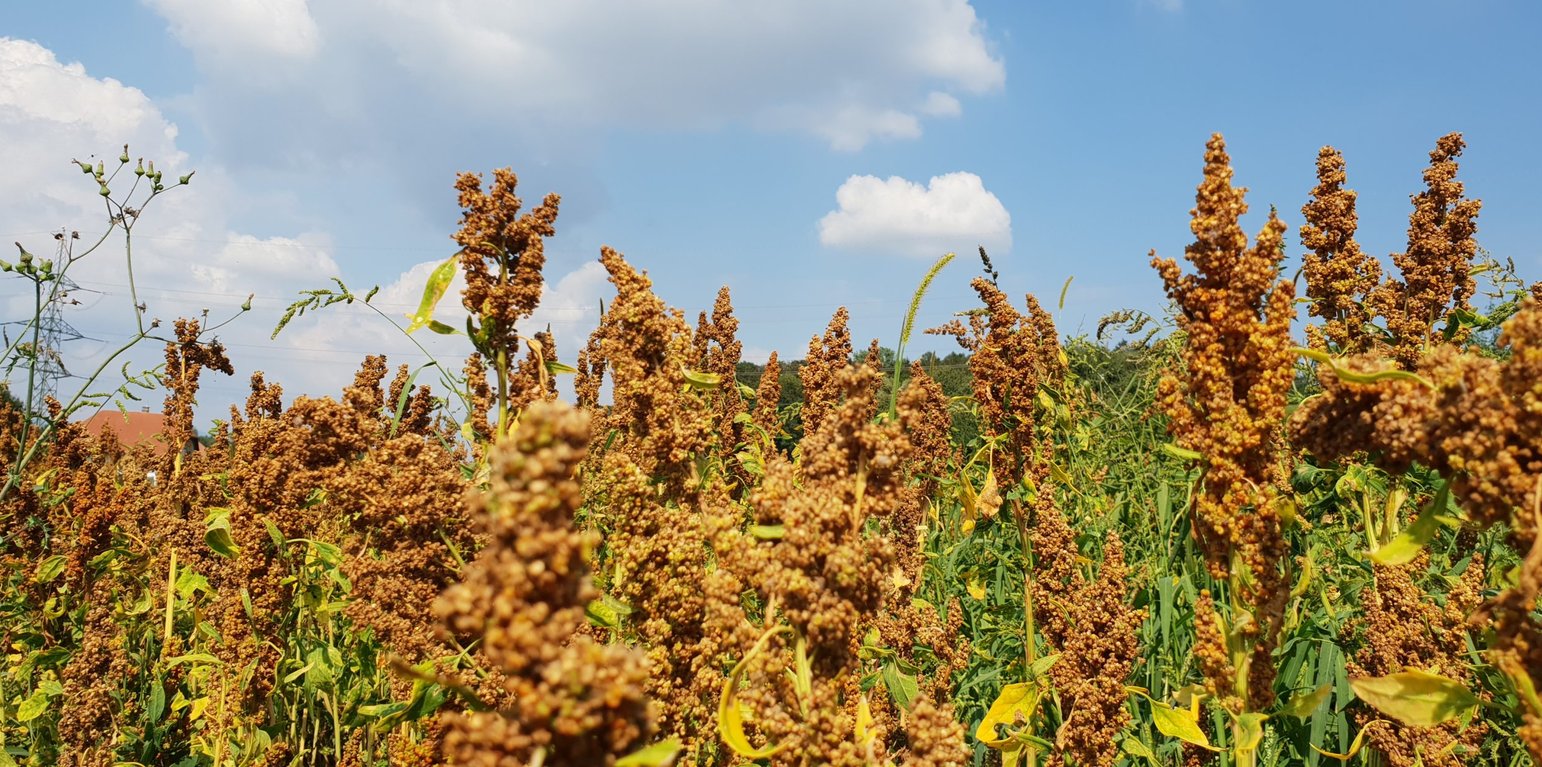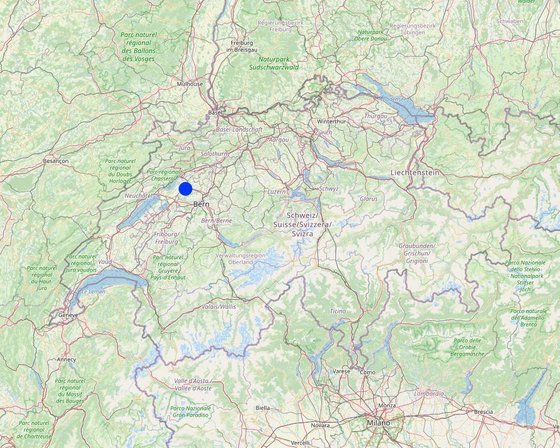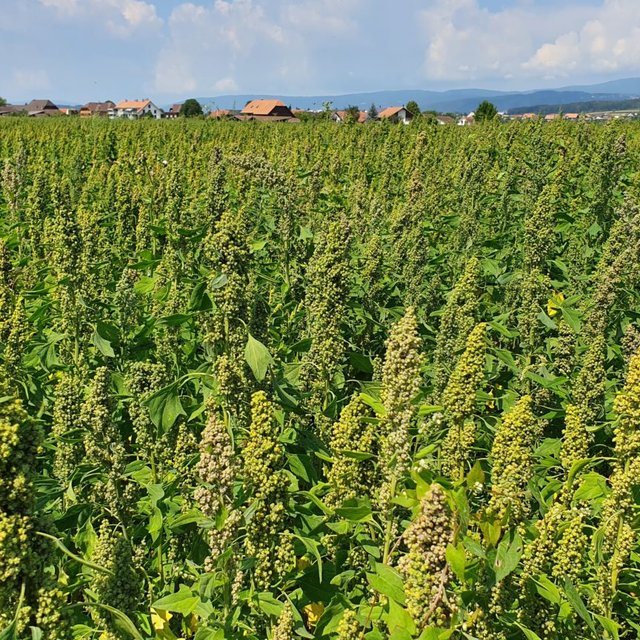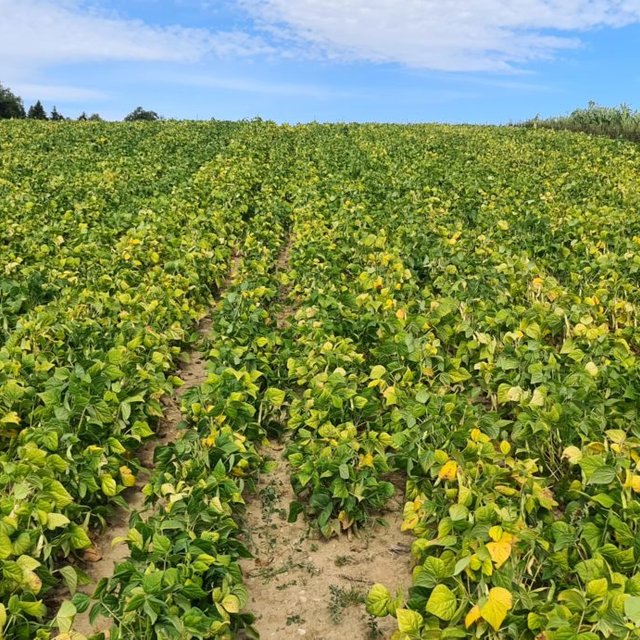



In response to changing environmental conditions, it can be valuable to adopt new plant varieties that offer benefits such as drought tolerance. The key is the improved adaptation of the crops to heat and drought. These adaptations are based on plant physiological and morphological characteristics that confer increased drought tolerance, as well as phenology, which can also affect the plants' water requirements. The goal is to reduce production losses and promote a regional, plant-based food system in Switzerland. To introduce and maintain drought-resistant crops requires specific activities and inputs, such as selecting suitable seeds and ensuring long-term profitable cultivation. This technology is applied to cropland in Switzerland, especially in the Swiss Plateau, where climate change is causing increasingly warmer and drier summers, as well as more intense precipitation in the winter months. These climatic changes favour the cultivation of crops that can better cope with drought periods, allowing for the replacement of crops that require irrigation in the same growing areas.
The main purpose is to adapt agricultural production to the effects of climate change while simultaneously reducing the emissions caused by farming. By cultivating drought-resistant crops, the risk of production losses during drought periods can be minimized, and a transformation towards more diverse, plant-based, and regional food production systems can be promoted. A major advantage of this technology lies in the adaptability of the selected crops to climate change. Since they are better adapted to tolerating drought periods, no additional irrigation is needed: this saves labour and other resources. Moreover, growing drought tolerant crops enables the production of regional, plant-based, and protein-rich foods (especially legumes) that are appreciated by certain consumer groups and can be better marketed.
However, there are also challenges and disadvantages that are not yet appreciated by land users. The lack of knowledge about non-traditional crops in Switzerland is a significant problem. Both theoretical knowledge and practical experience in cultivation are lacking, leading to high risk for farmers who must experiment with cultivation. Additionally, despite climate scenarios predicting drier summers, there is still the risk of cool and wet summers with increased precipitation. Besides the biophysical challenges, there are also socio-economic obstacles, as the demand from wholesalers is often focused on traditional crops, and niche crops like millet are commonly not popular.
This documentation focuses on an example of an innovative farmer in Spins, Switzerland. Stefan Brunner has been testing a wide variety of drought-resistant legumes such as lentils, lupins and black runner beans on his Eichhof farm since 2017. In addition to the large-scale cultivation of these drought-resistant crops, he also cultivates quinoa, peanuts, chia, sorghum, millet and rice in a demonstration plot. Stefan Brunner simultaneously attaches great importance to sustainable cultivation methods which include surface tillage and mulching.

الموقع: western midlands of switzerland (Broye catchment area), example farm in the canton of berne in Spins (near Aarberg), western midlands of switzerland, سويسرا
عدد مواقع تنفيذ التقنيةالتي تم تحليلها: موقع واحد
انتشار التقنية: منتشرة بالتساوي على مساحة (approx. 0.1-1 كم2)
في منطقة محمية بشكل دائم؟: كلا
تاريخ التنفيذ: 2017
نوع التقديم








Production losses during periods of drought can be minimised
Product diversity can be increased by growing alternative drought-resistant crops
By improving the soil's ability to cope with weather extremes (drought/heavy rainfall), land management in cultivation is simplified through greater flexibility.
Gentle tillage without the use of pesticides in the cultivation of drought-resistant crops (good groundwater quality)
Drought-resistant crops require less irrigation. In addition, the tillage method (surface rotting) also prevents the soil from drying out.
more diverse market thanks to greater product diversity in the cultivation of alternative crops
more diverse market thanks to greater product diversity in the cultivation of alternative crops
Gentle soil cultivation with minimal use of machinery (and application of surface rotting) requires more labour, even if the cultivation of drought-resistant crops does not mean additional work compared to conventional crops
Less water required for irrigation
Avoiding the use of pesticides leads to improved water and soil quality
Harvesting/collection of water
The improved water absorption capacity of the soil (through soil cultivation methods) can lead to improved groundwater recharge
Surface runoff can be minimised by improving the water absorption capacity of the soil (permanent root penetration).
Due to the improved water absorption capacity of the soil (through soil cultivation methods), less excess water is formed
The improved water absorption capacity of the soil can lead to improved groundwater recharge
Permanent ground cover can reduce soil drying out
The permanent ground cover reduces drying out and the permanent root penetration leads to improved water absorption capacity of the soil. This can improve the soil water balance.
The ground should be permanently covered. The permanent ground cover reduces drying out.
The permanent covering and rooting of the soil prevents surface run-off. This can prevent soil loss.
Green manuring can ensure an improved hummus structure.
The permanent ground cover reduces dehydration and the permanent root penetration leads to improved water absorption capacity of the soil. This prevents soil sealing.
The soil should remain permanently rooted and covered and be worked with as few and light machines as possible. This minimises soil compaction.
By applying green manure, the soil can be enriched with nutrients (nutrient cycle of the soil).
greater plant diversity in the cultivation of alternative crops
Due to the improved ability of plants to cope with drought. to deal with drought. In combination with good water storage capacity of the soil, the effects of drought on the harvest can be minimised.
In the analysed area (Spins near Aarberg) there is a permanent possibility to irrigate the fields due to the water availability of the nearby river Aare
In the analysed area (Spins near Aarberg) there is a permanent possibility to irrigate the fields due to the water availability of the nearby river Aare
The use of herbicides and fungicides was avoided in the cultivation of drought-resistant crops, thus preventing contamination
improved water absorption capacity (through soil cultivation methods) of the soil
Due to the improved adaptability to climatic conditions, production remains more stable